Timeline: Scottish Golf History
A Timeline of Early Scottish Golf History
1421 – A Scottish regiment aiding the French against the English at the Siege of Baugé is introduced to the game of “chole.” Hugh Kennedy, Robert Stewart and John Smale, three of the identified players, are credited with introducing the game in Scotland.
1457 -- The word “golf” was first recorded in the 15th century, appearing twice in an Act of the Scots Parliament on March 6. In a well-intentioned but misguided attempt to protect the Scottish homeland from the English invaders, the Scottish king, James II, and the Parliament, banned golf (and football) because it was believed that “the golf” was interfering with archery practice.
1471 – The ban on golf is reaffirmed by King James III and the Scottish Parliament. (Several websites state that the ban was reaffirmed in 1470.)
1491 – The golf ban is affirmed again by King James IV.
1502 (GOLF’S BIG YEAR) – With the signing of the Treaty of Perpetual Peace between Scotland and England, King James IV lifted the ban, thus preserving civilization and man’s right to happiness. In September, according to the records of the Lord High Treasurer of Scotland, James IV paid 14 shillings “for clubs from the bower at Saint Johnston.” This is the first recorded purchase of golf equipment.

1504 -- James IV plays in the first officially documented golf match. It was against the Earl of Bothwell.
1505 -- James IV purchases a dozen balls to play at Royal Park in Stirling.
1552 -- The first evidence that golf is played in St. Andrews is recorded.
1553 – The Archbishop of St Andrews issues a decree giving the local citizens the right to play golf on the links at St. Andrews.
1567 – Mary, Queen of Scots, was widely criticized by the Church for playing golf shortly after the murder of her second husband, Lord Darnley, in the fields next to Seton Palace. This is first known reference of a woman playing golf. She is often called the Mother of Golf.

1618 – The featherie ball was introduced, primarily replacing the “hairy” ball, which was a stitched-leather ball filled with cows' hair. The featherie was made with chicken or goose feathers tightly packed into horse or cow hide sphere. It was then painted, most often white.
1618 -- King James VI of Scotland and I of England confirms the right of the populace to play golf on Sundays.

1621 – First recorded reference to golf on the links of Dornoch (later Royal Dornoch), in the far north of Scotland.
1641 – Charles I is playing golf at Leith (Edinburgh) when he learns of the Irish rebellion, marking the beginning of the English Civil War. He finishes his round.
1642 – John Dickson receives a license as ball-maker for Aberdeen.
1682 – In the first recorded international golf match, the Duke of York and John Patersone of Scotland defeat two English noblemen in a match played on the links of Leith. Andrew Dickson, carrying clubs for the Duke of York, is the first recorded caddy.
1687 – The student diary of Thomas Kincaid includes his Thoughts on Golve, and contains the first instructions on playing golf and an explanation of how golf clubs are made.
1721 – Earliest reference to golf on Glasgow Green, the first named course in the west of Scotland.
1735 – The Royal Burgess Golfing Society of Edinburgh is formed. The society’s original home course was Bruntsfield Links. Due to overcrowding, the members moved to Musselburgh in 1874. In 1895, the society opened its own course in Barnton. Willie Park Jr. did the routing for the course.
1744 -- The first known written rules of golf were established by the Gentlemen Golfers of Leith on March 7. The club later changed its name to the Honourable Company of Edinburgh Golfers. The 13 original rules were approved for the Annual Challenge for the Edinburgh Silver Club. (See below for the original 13 rules of golf.)
1754 -- The Society of St Andrews Golfers adopted the Gentlemen Golfers' rules from ten years earlier, but with a slightly amended Rule 5.
1759 – The first reference to stroke play at St Andrews. Previously, all play was match play.
1764 - The first four holes at St Andrews are combined into two, which reduced the course from 22 holes to 18. The 18-hole St. Andrews course eventually becomes the standard set-up.
1767 – The score of 94 returned by James Durham at St Andrews in the Silver Cup competition sets a record unbroken for 86 years.
1773 – Competition at St Andrews is restricted to members of the Leith and St. Andrews societies.
1780 – The Society of Golfers at Aberdeen (later the Royal Aberdeen Golf Club) is formed.
1810 – Earliest recorded reference to a women's competition at Musselburgh (a small town just east of Edinburgh’s city center.)
1826 – Hickory imported from America is used to make golf shafts.
1832 – The North Berwick Club (25 miles northeast of Edinburgh) is founded.
1833 – The St Andrews Golfers ban the stymie but rescind the ban one year later.
1834 – William IV (1765 to 1837), who was King of the United Kingdom of Great Britain and Ireland, confers the title "Royal and Ancient" on the Golf Club at St Andrews.
1848 – Invention of the "guttie," the gutta-percha ball. It flies farther than the feathery and is much less expensive to make. It contributes greatly to the expansion of the game.

1867 -- The Ladies Golf Club of St. Andrews is founded. It is now known as the St. Andrews Ladies’ Putting Club. The club’s course -- The Himalayas – is open to the public.
The sources for the timeline are: Historical Dictionary of Golf (book) By Bill Mallon and Randon Jerris; Wikipedia; www.golfing-scotland.com; www.worldgolf.com; www.egolfshare.com; www.scottishgolfhistory.org and www.golf-information.info.
Articles & Laws in Playing at Golf
- You must tee your ball within a club's length of the hole. (A diameter of two club lengths. Teeing grounds are now defined as two club lengths in depth.)
- Your tee must be on the ground. (Tees were mounds of sand.)
- You are not to change the ball which you strike off the tee.
- You are not to remove stones, bones or any break club for the sake of playing your ball, except upon the fair green, and that only within a club's length of the ball.
- If your ball comes among watter, or any wattery filth, you are at liberty to take out your ball and bringing it behind the hazard and teeing it, you may play it with any club and allow your adversary a stroke for so getting out your ball.
- If your balls be found anywhere touching one another you are to lift the first ball till you play the last.
- At holling you are to play your ball honestly at the hole, and not to play upon your adversary's ball, not lying in your way to the hole.
- If you should lose your ball, by its being taken up, or any other way, you are to go back to the spot where you struck last and drop another ball and allow your adversary a stroke for the misfortune.
- No man at holling his ball is to be allowed to mark his way to the hole with his club or anything else.
- If a ball be stopp'd by any person, horse, dog, or any thing else, the ball so stopp'd must be played where it lyes.
- If you draw your club in order to strike and proceed so far in the stroke as to be bringing down your club, if then your club should break in any way, it is to be accounted a stroke. (This is the definition of a stroke)
- He whose ball lyes farthest from the hole is obliged to play first.
- Neither trench, ditch, or dyke made for the preservation of the links, nor the Scholars' Holes or the soldiers' lines shall be accounted a hazard but the ball is to be taken out, teed and play'd with any iron club. (Ground under repair.)

